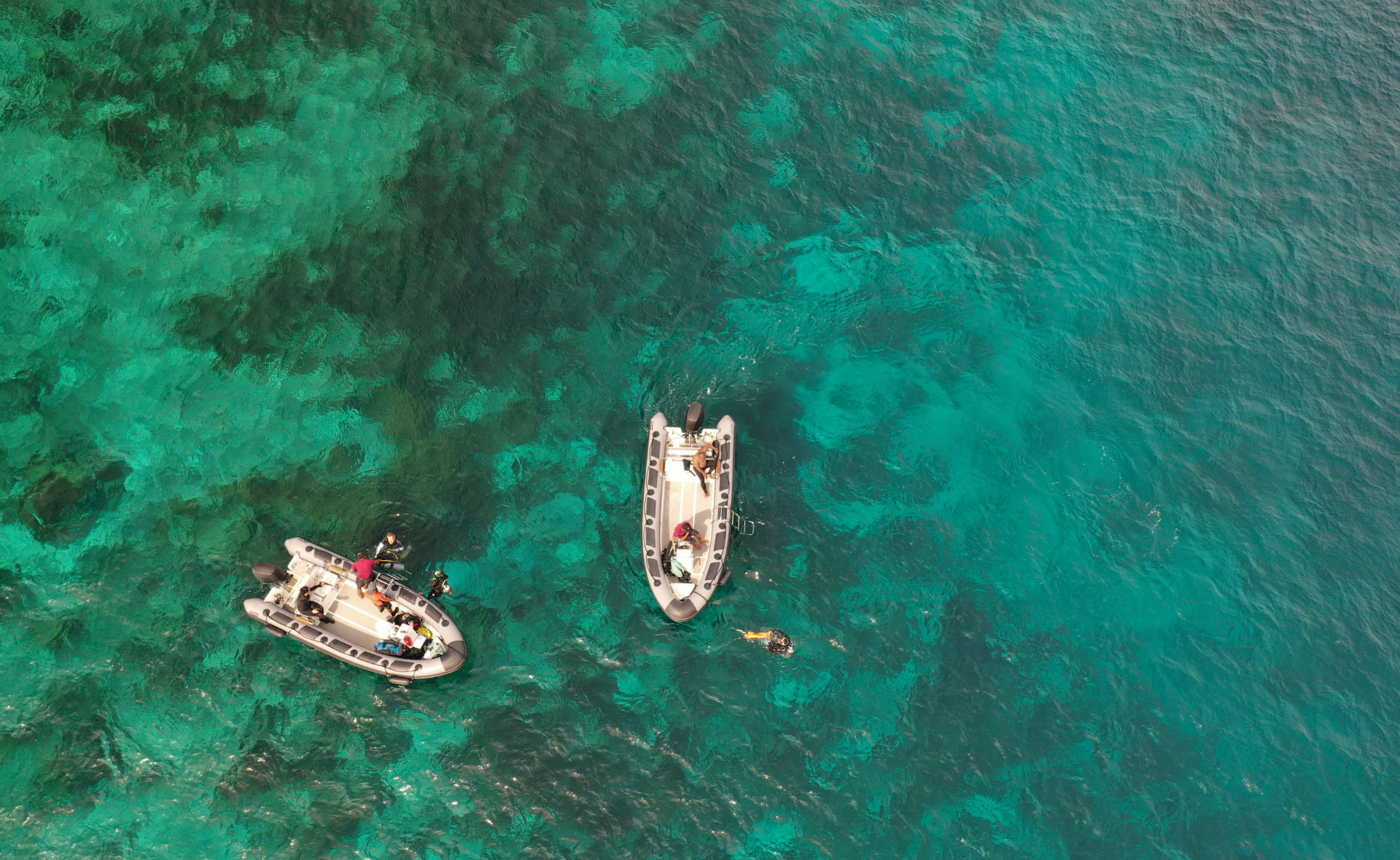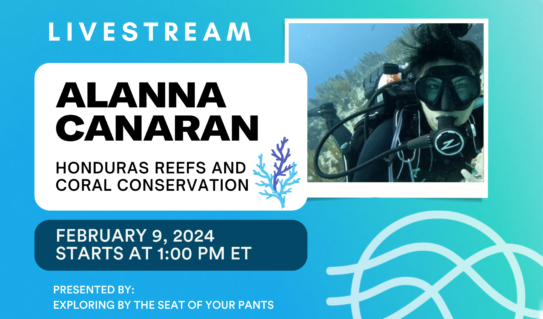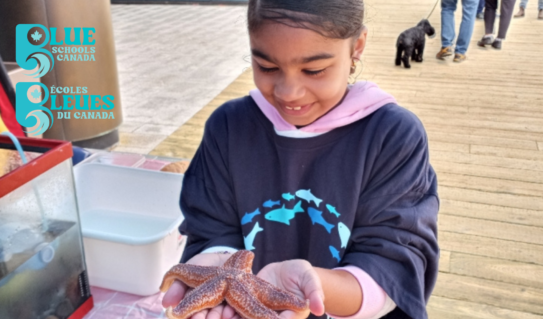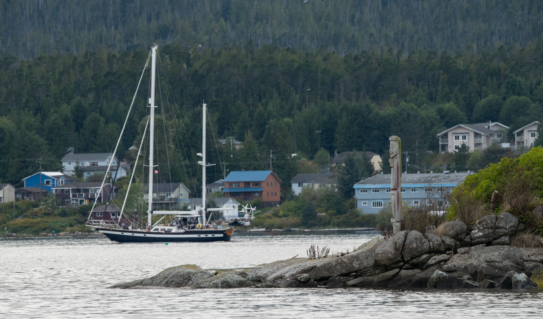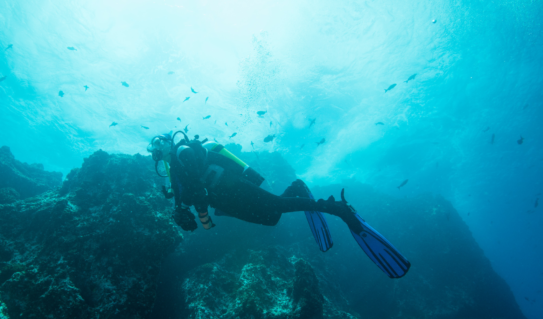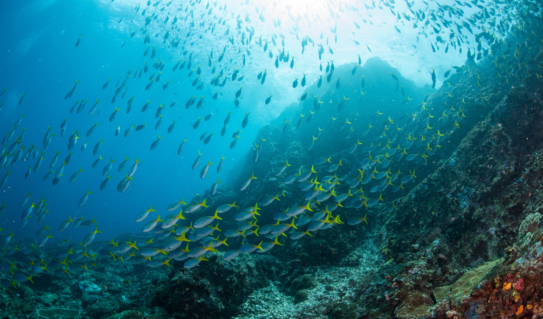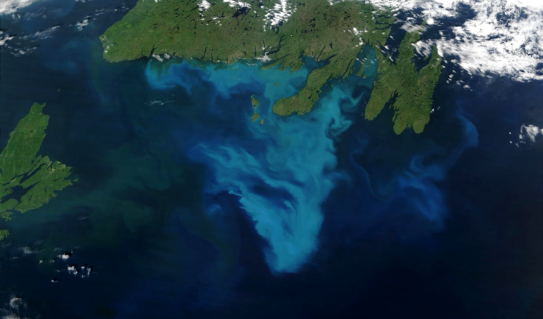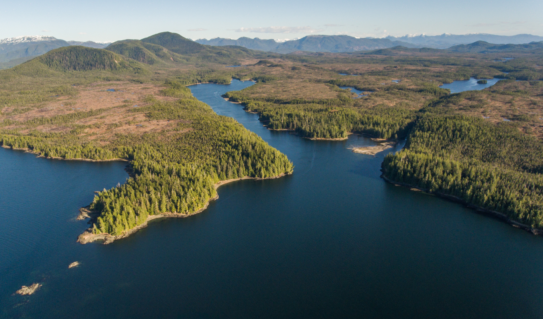5. The ocean supports a great diversity of life and ecosystems
Coral reefs, the rain forests of the ocean, support an unbelievable diversity of life. Even though they cover just 0.1% of the ocean’s surface, they support the highest diversity of fish and invertebrate species on Earth. Just to count species of fish on a reef is a challenge. Fish can be hard to find – life on a reef requires being unseen, surprising prey and hiding from predators. Now, researchers are using DNA shed from the bodies of fish in ocean water around reefs to identify the species living there. Their data revealed 16% more fish species than previously accounted for in diving observations.
Ninety-nine percent of the habitable space on Earth is in the ocean. The largest animal that has ever existed, the blue whale, and the smallest microbes, all live in the sea. The ocean supports a great diversity of life, and we don’t even know yet how many species it holds in total - we are still counting.
6. The ocean and humans are inextricably connected
In 2014, Kimberly Orren and Leo Hearn founded Fishing For Success, a not-for-profit that helps to re-connect Newfoundlanders to their fishing roots. Located in the coastal town of Petty Harbour, just outside of St. John’s, Newfoundland, Fishing for Success brings groups out onto the water to learn the local traditional skills used to fish for cod. They partnered with the Association for New Canadians to bring female immigrants into nature, at sea, to connect with one another in a safe space, and to fish. Their youth program teaches fishing skills and has participants make art of their catch; brightly coloured imprints of the cod’s bodies.
Humans are connected to the ocean in tangible ways – through fishing, shipping and other uses of ocean resources, but also in more intangible ways – through our deep cultural and personal connections.
7. The ocean is largely unexplored
In 2018, a submarine called the Limiting Factor brought humans for the first time to the bottommost point of all five major ocean basins. In 2019, it was used to measure the depth of the Mariana Trench, the deepest point on Earth, at just under 11 km, it is two kilometers deeper than Mount Everest is high. In 2021, the Limiting Factor dove in the Philippine Trench to the site of the shipwreck of the USS Johnston, a World War Two ship, and at over 6 km of depth, found a small squid swimming just above the seafloor. A small bigfin squid, it became the deepest-dwelling squid known to science. Researchers and explorers make discoveries about our ocean every day, and there are uncountable discoveries still waiting to be made!
…
There’s so much more to learn about each of the seven principles, if you’d like to ride the wave. “Knowing and appreciating these principles not only enhances our connection to the ocean but also allows us to be more mindful of our responsibility for maintaining a healthy, vibrant, nurturing ocean environment”, says Boris Worm, Scientific Director of Ocean School.
Let Ocean School take you on a journey to connect with the ocean, and check out the United Nations’ website dedicated to the Seven Principles of Ocean Literacy, to go to greater ocean knowledge depths.
